By Dan Weisz
Arizona is home to 28 species of bats. Often, bridges supply the perfect roost spot for them. I visited the Ina Road Bridge where it crosses the Santa Cruz River to watch one large colony of bats begin their “day” just before sunset. This group left their roost at about 5:20, earlier than I would have imagined and well before sunset. They were likely heading for the insect-rich agricultural fields in Marana and beyond. There are said to be over 10,000 bats living under the bridge. The photo below is a tiny portion of the colony, but represents how much they filled the sky as they began their foray.
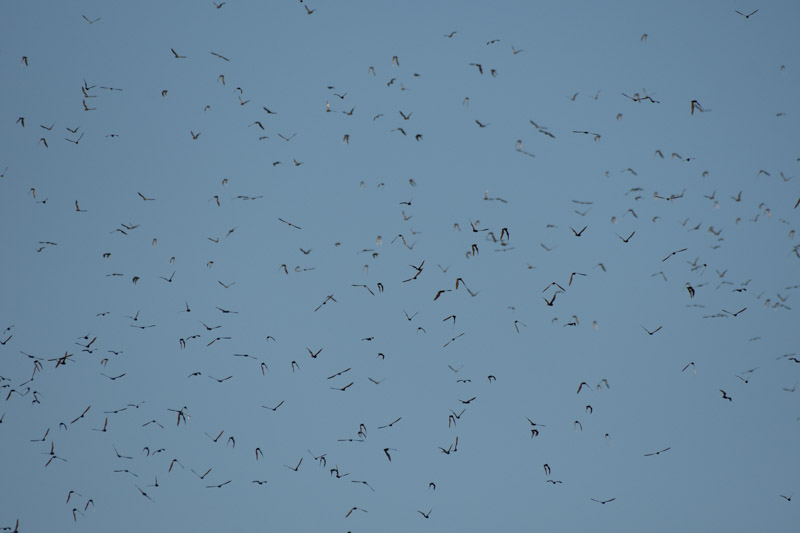
Here is a closer look at a few of the bats. These are Mexican Free-tailed Bats. To learn more about this specific colony and how the bridge was built to accommodate them, see https://blog.desertmuseum.org/2018/02/09/ina-road-bridge-more-than-just-a-bridge-its-a-home/
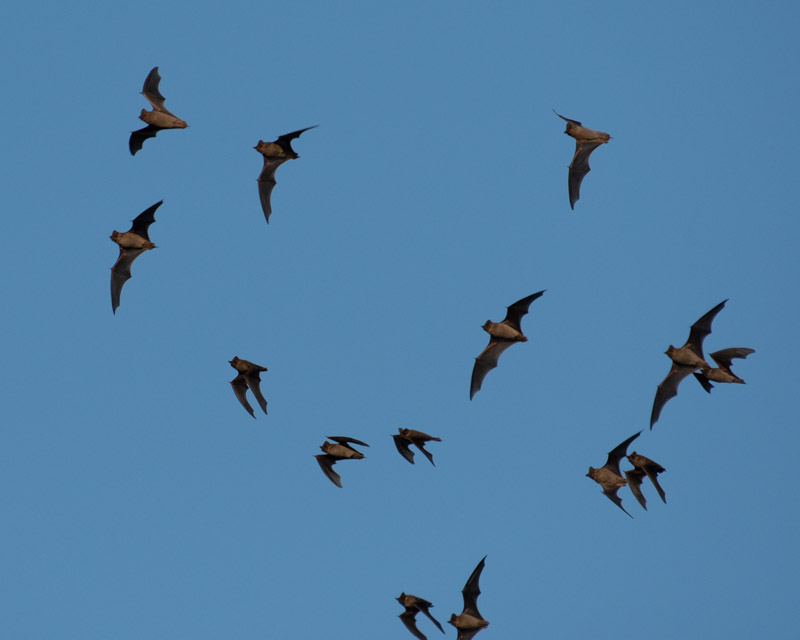
Bats are cute little mammals with wings, don’t you think? The bats are not the ones emptying your hummingbird feeders now and they may be different from the ones flying over your yard and pool too. To learn more about this species, go to tohttps://www.desertmuseum.org/kids/bats/mexican_free_tailed_bat.php
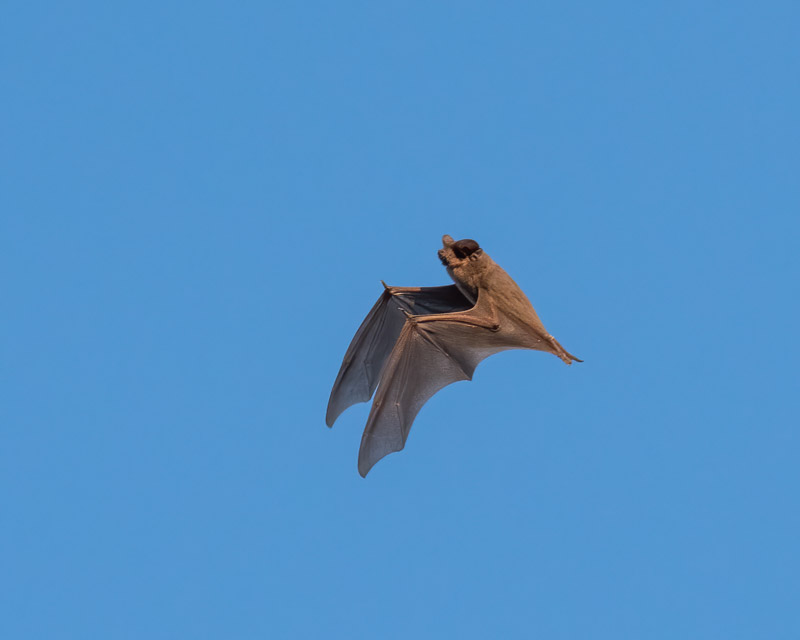
These two puzzle pieces seem to fit together. You can see the bats’ thumbs sticking up from each wing and in the photos above and below, see the bones of their fingers stretching through the wing membrane. You can also see the bend in their elbow between their bodies and their thumbs!
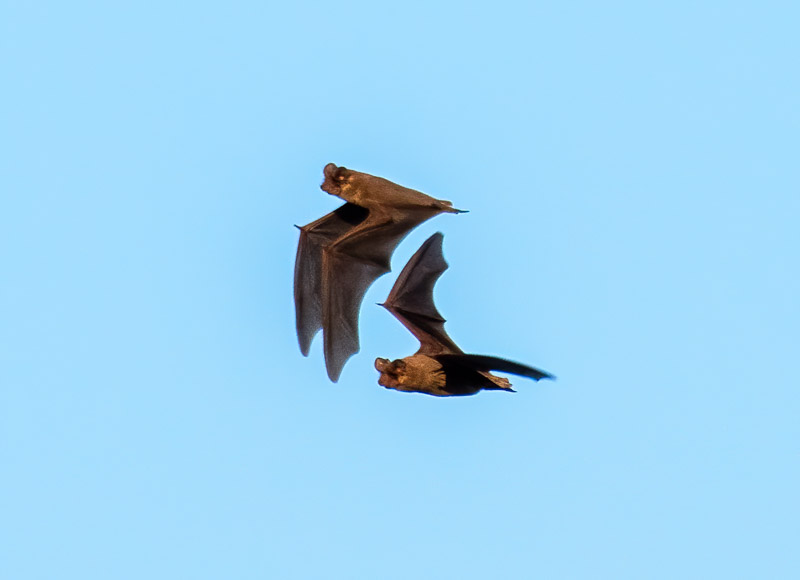
The bat below almost seems to be smiling as it looks forward to its day.
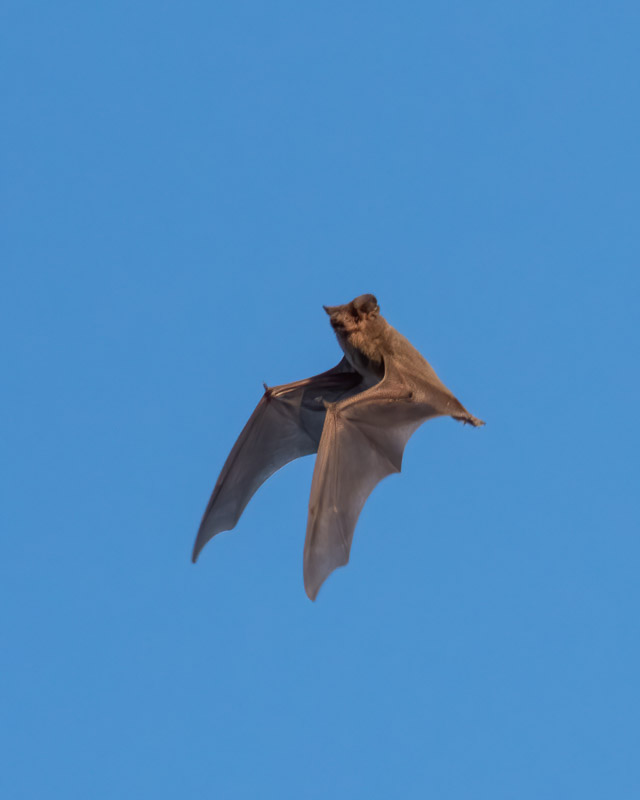
In order for animals to survive, they need air, water, food and shelter. The Ina Road Bridge crosses over the Santa Cruz River where the river is now flowing year-round providing a nice supply of water for the bats. Yes, a portion of a river in Tucson is flowing strongly year-round as seen in the waterfall below, under the bridge! The new Tres Rios Water Reclamation Facility treats wastewater and then releases high quality effluent into the riverbed where it enhances the environment while recharging the water table in the aquifer below ground. The latest “A Living River” report can be seen here: https://sonoraninstitute.org/files/Living-River-Northwest-Tucson-to-Marana-2019-WY.pdf
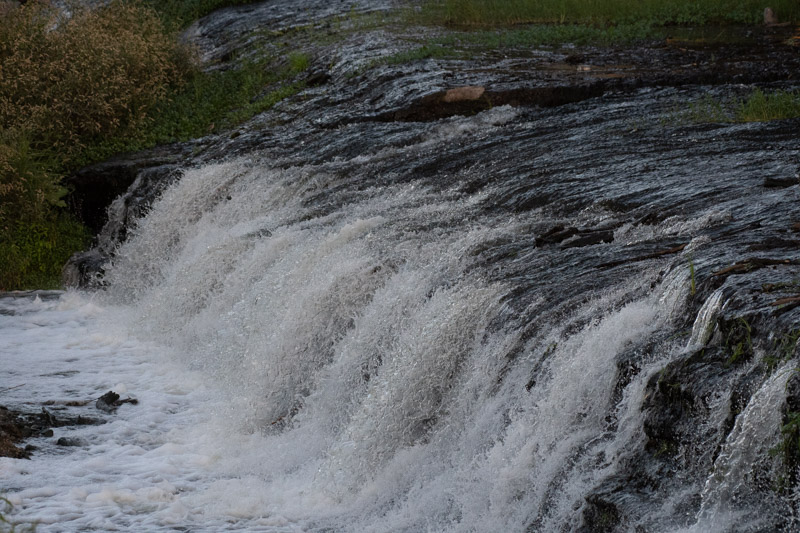
And because the clean river runs year round creating a rich and diverse environment, wildlife has returned. One of the birds I watched as the sun began to set was this Great Egret.
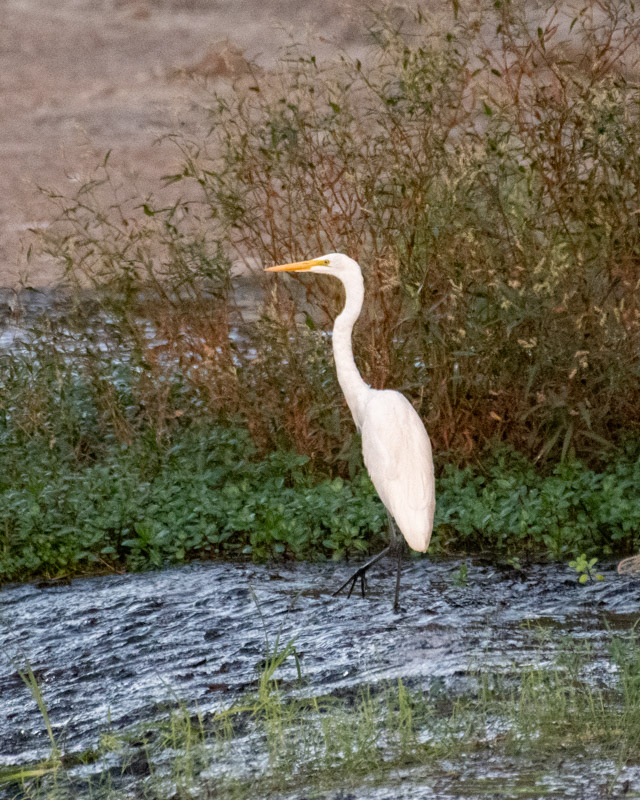
The Egret moved back and forth from the river where it fed, to the tall trees along the banks. Here is it on a tamarisk tree. Remember that Great Egrets are over three feet long from beak to tail, yet weigh just a bit over two pounds.
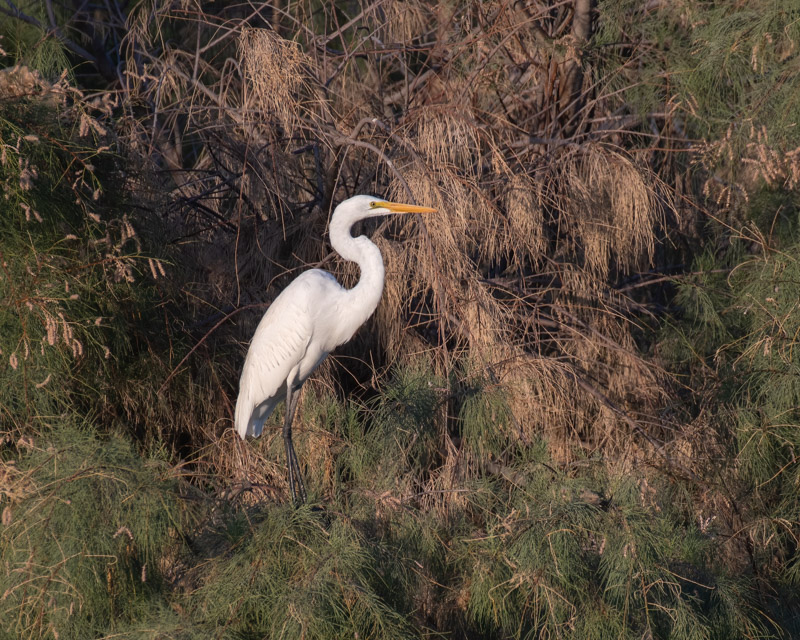
While watching the Great Egret, an adult Black-crowned Night Heron flew out of the reeds to a high perch. As I’ve said often, I don’t think birds have emotions but this fellow sure seems to be excited about reaching a good spot in the tree!!
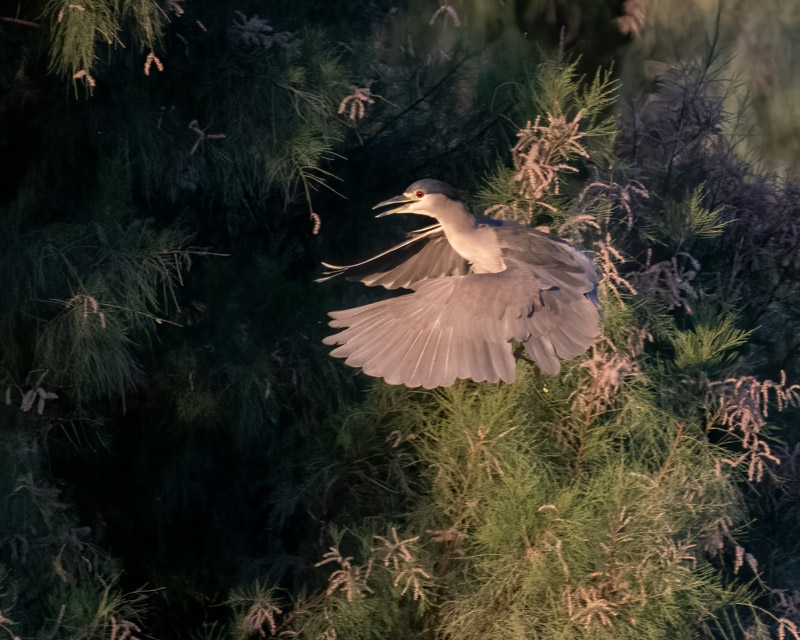
Meanwhile the Great Egret found another perch at the very top of the tamarisk. You can see the flowers of the tamarisk at the ends of the branches. Tamarisk, or Salt Cedar, is an invasive species that is found across the American West.
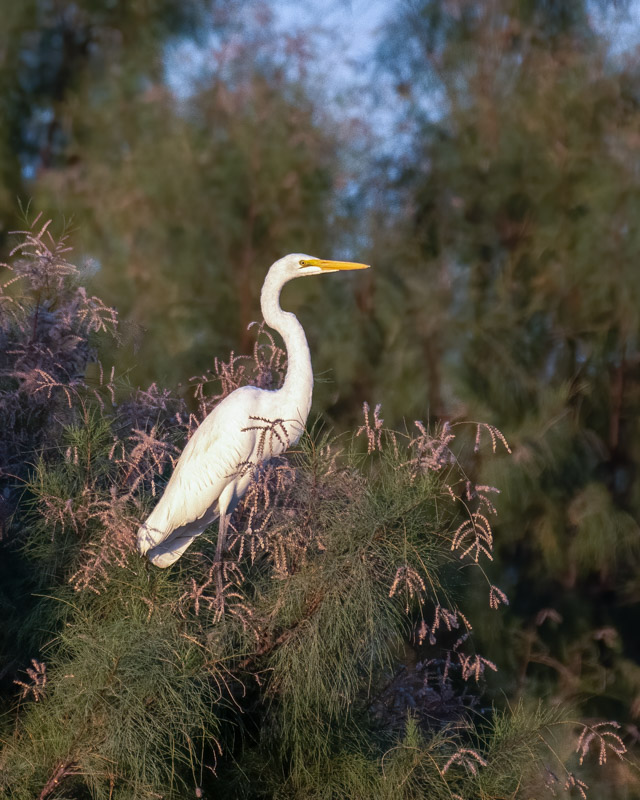
And then the Great Egret flew to another perch, showing its almost five foot wingspan.
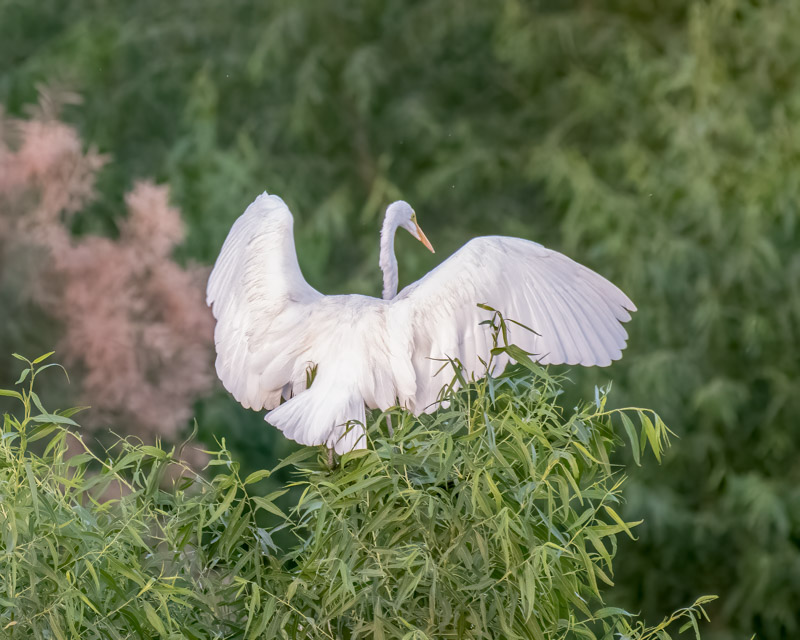
Landing in the water for another feeding session, the Egret shows its grace and beauty!
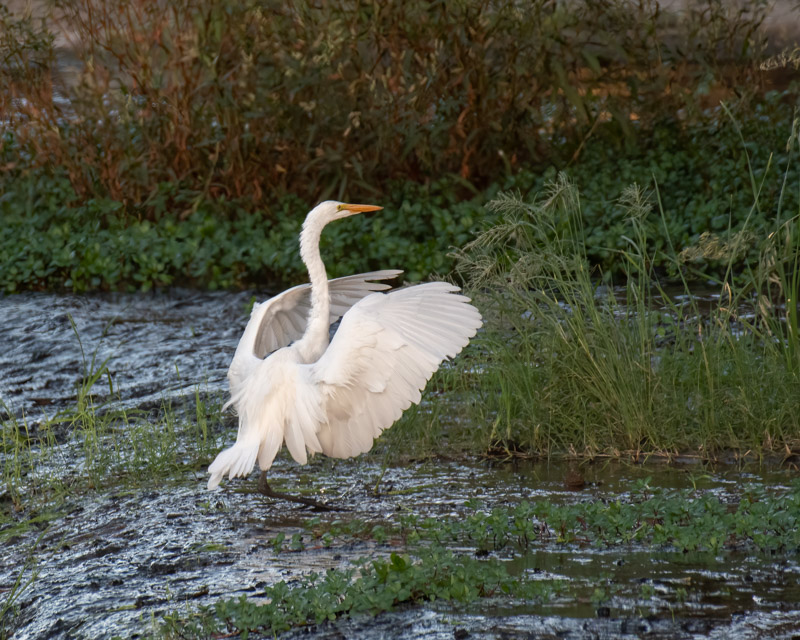
I believe this Great Egret will remain at this spot for the entire winter. Joining it there was a Great Blue Heron. I imagine that both birds are returning ‘snowbirds’ who knew where they wanted to live for the winter. My next email will have images of the Great Blue Heron hunting in the waterfall.
